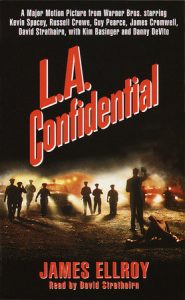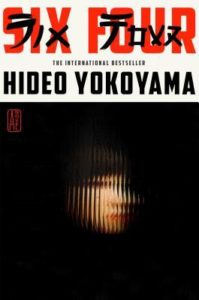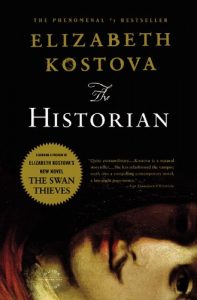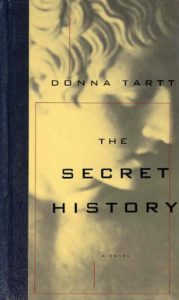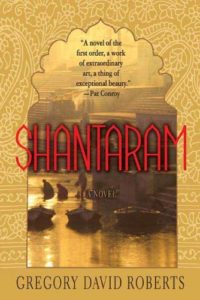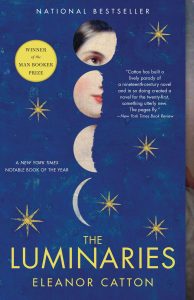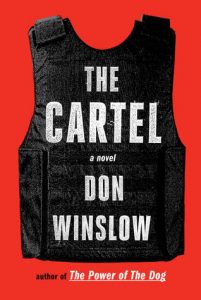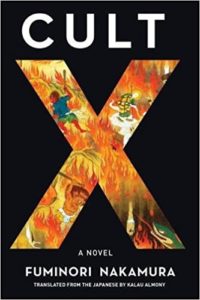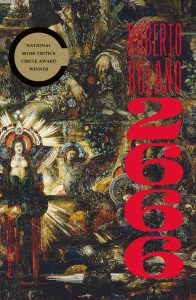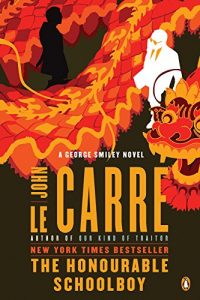In Patti Smith’s memoir Just Kids, she writes that during her many bouts of childhood illness, reading long novels kept her going. Many of the novels most renowned for their length were, after all, written at times of prevalent disease, with threats of epidemics always around the bend, and one can imagine many a Victorian convalescent sprawled in an adirondack chair at Baden Baden, whiling away the time toward recovery with a lengthy tome or two. Bored upper-class women, train passengers, friendless children with strict tutors—there was a wide audience for the lengthy in the 29th century, and even the fast fiction of the time added up to some of the longest classics around when finished in serial form and repackaged as single volumes (thinking of you, Dickens).
In the 20th century, long historical novels replaced social critique, gothic hackeries, and melodromatic shund as the dominant form of lengthy fiction, soon to be matched by fantasy. Many of the great 19th century crime novels count among the works we like to claim as influences in the crime community, but by the 1920s, the detective novel was known for its short, snappy form, and it wasn’t until the later 20th century that the Long Crime Novel came to stay.
The epic crime novels of the past few decades have made up for the brevity of their forebears in both length and complexity (whoever’s worked on adapting a James Ellory novel deserves a standing ovation). A long novel might be a chance to really dig into an individual psyche, but long crime novels tend more towards the multicast epics of power and confrontation, often on a historical stage or in a present day marred by the real implications of past actions.
While most of us today are not sick, we are stuck at home, and perhaps now is the time to rediscover the lengthy novel. We’ve already celebrated crime fiction at its best and briefest; now it’s time to hunker down and enjoy reading some long-ass books. What else are you going to do? Knit?*
Most of the blurbs below are by yours truly, but you’ll see a couple from my fellow CrimeReadsians, to whom I am ever grateful for pitching in.
L.A. Confidential, James Ellroy
Page Count: 512
It’s amazing that this one ever made it into a logical film adaptation. They had to cut SO MUCH guys. The novel itself gets a bit convoluted in parts, but everything comes together in the end, for an epic tale of crime and corruption in 1950s Los Angeles full of some of the most memorable characters to ever appear in a novel. Oh, and for anyone who hasn’t seen the movie, L.A. Confidential follows several members of the LAPD, some more corrupt than others, as they hobnob with Hollywood stars and try to figure out who’s really running the city.
Six Four, Hideo Yokoyama
Page Count: 576
In this thoughtful tale of the long shadow of past crimes, an anniversary of an unsolved kidnapping approaches, triggering a newly appointed police press liaison to reopen the investigation. When he discovers some information the police would rather be kept from the vivtim’s family, things really get interesting…
The Historian, Elizabeth Kostova
Page Count: 676
Elizabeth Kostova’s The Historian has one of my favorite premises of all time; a twentieth century academic discovers truth to the Dracula myth, and winds up on a hunt to find him. It’s a slow burn, and a beautifully written novel, with two intertwined narratives (that of a young scholar who goes searching for his vanished professor, and the scholar’s teenaged daughter, who goes searching for her missing father many years later). It is also, I should add, an entirely new story, not a rehashing of Bram Stoker’s tale, and it does not traffic in the countless nutty and often misdirected film adaptation plots that the novel has spawned.
The Historian is a smart, meaningful descendant (though its ending is not my favorite, I’ll tell you); it inherits and internalizes that the heart of Dracula the novel is dogged research. Just like Stoker’s Dracula, The Historian is an archival adventure, in which journals, letters, and other documents are understood as the keys to unlocking one of history’s most powerful myths. And, as Stoker’s novel does, it frames Dracula the vampire as a kind of ersatz historian, one who embodies the lifeblood of a nation with ever-changing borders, whose very existence seeks to overwrite, oppress, and erase the critical nuances of that history. The frame story of The Historian and its second tale, which is a kind of mise-en-abyme of the first, are both about the cruciality of documenting and reading about the past. If we are doomed to always repeat history, at least we can know what forces we are up against.—Olivia Rutigliano, CrimeReads staff writer
The Secret History, Donna Tartt
Page Count: 576
This one is a favorite in the Lit Hub office, and at close to 600 pages, you can while away countless hours in a close reading of a modern literary classic that also just so happens to involve a murder. When a group of classics students allow themselves to be carried away by the temporary possibilities of the Ivory Tower, and one of their number dies, the consequences are epic, and the role of knowledge gained, lost, and hidden is profound.
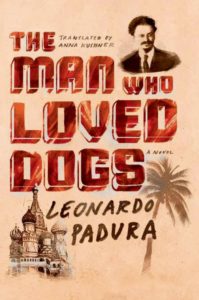
The Man Who Loved Dogs, Leonardo Paduro
Page Count: 592
I love this book so much, although I love Trotsky even more so I’ve never quite been able to finish it. After all, it’s a book not only about Trotsky’s assassination, but also the slow destruction from afar of his entire family, and the moral destruction of all those compromised by Stalinism. The Man Who Loved Dogs follows several men who enjoy the company of canines (unfortunately, purebreds, but I’m confident that if Trotsky was alive today he would prefer rescues). These men are: Trotsky’s assassin, a Spanish Republican radicalized by his firebrand mother, an unnamed author in Cuba, to whom the assassin tells his story while walking his dogs, and of course, Trotsky himself, who begins the novel with a dog’s cold nose pressed into his hand, reassuring and asking for reassurance, as the two continue their long ordeal.
Shantaram, Gregory David Roberts
Page Count: 944
While Shantaram draws from the experiences of the author in that he, too, was an Australian fugitive who found refuge in India, this one should be enjoyed with more than a grain of salt. A delightful yet exoticizing romp through the criminal underworld of some of 1970s India’s most bustling cities, this one will amuse you, entertain you, and annoy you in equal measure!
Natchez Burning, Greg Isles
Page Count: 816
This one is number 4 in Isles’ massive Penn Cage series, and the first in his Natchez trilogy. The whole series is well worth the read, but Natchez Burning reads as just as good of a stand-alone. In Natchez Burning, Cage continues to encounter the darker side of Mississippi life and history when his father is accused of a crime with roots stretching back to horrific acts of violence against activists in the Civil Rights Era.
The Luminaries, Eleanor Catton
Page Count: 864
More historical fiction than crime, but there’s still plenty of murder, secrets, and betrayal Eleanor Catton’s behemoth of a novel. There are a dozen main characters, each a playful reinvention of a historical archetype, each wandering about New Zealand in 1866 for their own (sometimes nefarious) reasons. And at over 850 pages long, it’ll keep you busy for quite some time (especially with all the wikipedia-searching you’ll do when confronted with obscure Antipodean details).
The Cartel, Don Winslow
Page Count: 640
Don Winslow’s border epic is now a trilogy, and this is just the second, but it stands alone as the urgent and ultraviolet tale of a looming confrontation between two men on opposite sides of the law. Kaleidoscopic in scope and generous with its body count, with a powerful social justice message.
The Name of the Rose, Umberto Eco
Page Count: 579
My parents, a medievalist and an early modern historian, adored this when it came out, so you know it must be historically accurate AF. In the context of necessary distractions, The Name of the Rose immerses us in a world so richly detailed we’ll emerge thinking we too live in a monastery (and in a sense, we all live monastically at the moment, sheltering in place in our little apartment cells).
Cult X, Fuminori Nakamura
Page Count: 528
Fuminori Nakamura is known for the brevity of his works, so it came as a pleasant surprise to me to see the behemoth Cult X come across my desk last year. Two warring cults, one dedicated to essex, and the other to self-denial, trade traitors and informants in a cat and mouse game that can only end badly.
2666, Roberto Bolaño
Page Count: 898
The Chilean master’s final, posthumously published novel is a swirling, kaleidoscopic vision of the modern condition that will keep you reading for days, weeks, and then if you start over again it’ll feel like an entirely different book, so that’s a lot of reading to get through. Broken up into five parts, 2666 encompasses stories of critics, academics, journalists, writers, artists, murderers and above all murder victims—the slain women of Santa Teresa, Mexico (a fictionalized version of Ciudad Juarez). Bolaño’s project is almost unimaginably ambitious. On the one hand he’s telling a story about very specific, and brutal crimes (albeit coming at those crimes in many and varied ways); on the other, he’s telling a metaphysical story about the slow creep of evil over the face of the world. It’s a shocking, elusive, brilliant work, and more than appropriate reading for times of crisis.—Dwyer Murphy, CrimeReads managing editor
The Honourable Schoolboy, John le Carré
Page Count: 606
I know, this one is the sixth book to feature George Smiley and his semi-loyal army of civil servants, but with or without any familiarity with either the characters or its immediate predecessor, Tinker, Tailor, Soldier, Spy, you can find your way through the twists, turns, and double-crossings of The Honourable Schoolboy. Jerry Westerby is a reporter and occasional spy who’s recruited for a Very Special Mission in Hong Kong—one which will inevitably lead to Very Tragic Results. Beautifully written and soul crushingly depressing, this is my favorite of le Carre’s oeuvre.
The Witch Elm, Tana French
Page Count: 528
Tana French’s masterful standalone slowly unravels surprise after surprise from a densely woven tapestry of betrayal and deceit for one of the best crime stories of the decade. The Witch Elm begins with a brain injury, and as the narrator recovers and slowly regains his memories, the readers too begin to discover unpleasant things about our less-than-shiny protagonist.
*I will in fact be knitting a great deal over the next few weeks. Although not a sweater. That’s way too hard.


